#Volkspark Prenzlauer Berg
Video
Schicke Platte by Pascal Volk
#Europe#Berlin#Berlin Pankow#Prenzlauer Berg#PrenzlBerg#Oderbruchkippe#Volkspark Prenzlauer Berg#Stadtlandschaft#Urban landscape#Cityscape#arte de paisaje urbano#skyline#Árboles#Bäume#Trees#Sträucher#Shrubs#matas#Plattenbau#Sommer#Summer#Verano#Canon EOS R#Canon RF 70-200mm F2.8L IS USM#135mm#DxO PhotoLab#flickr
69 notes
·
View notes
Photo

Sibylle Bergemann. Volkspark Prenzlauer Berg, Berlin. 1978
#BW#Black and White#Preto e Branco#Noir et Blanc#黒と白#Schwarzweiß#retro#vintage#Sibylle Bergemann#Volkspark#Prenzlauer Berg#Berlinn#Alemanha#Deutschland#construiction site#1978#1970s#70s
50 notes
·
View notes
Photo

…manchmal ist eben alles Käse / am Volkspark Prenzlauer Berg by DANNY-MD
2 notes
·
View notes
Text
Portrait photography with Schneeeanna

I did this Portrait photography session with Schneeeanna on 20 October 2019 in Berlin - Volkspark Friedrichshain. For Portrait photography with Schneeeanna I used my Canon 6D camera with my EF50mm F1.8 II Lens. Autumn is the best season to take nice pictures. I found one amazing location in the park in Friedrichshain - Berlin.
I love Portrait photography and since the year 2000, I've been taking photos. Visit my photo gallery for more portrait pictures here.

Portrait photography with Schneeeanna
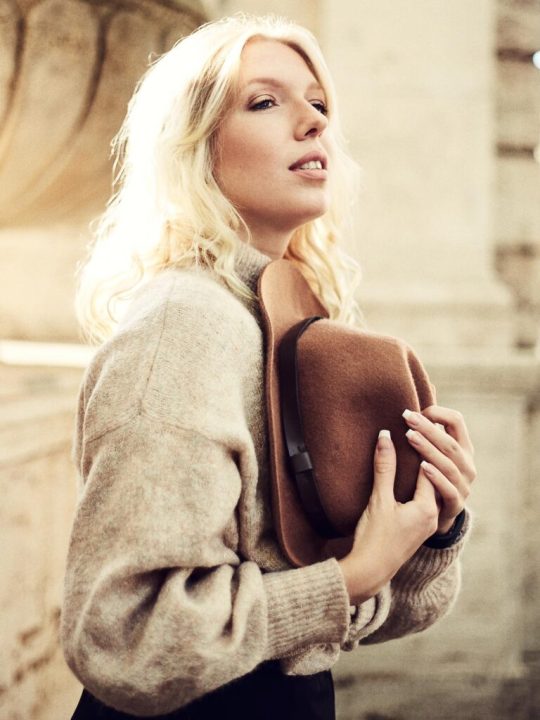
Portrait of Schneeeanna

Portrait photography at Volkspark Friedrichshain
Portrait photography with Schneeeanna in Volkspark Friedrichshain - Berlin
Volkspark Friedrichshain is located between Friedrichshain and Prenzlauer Berg, and it's a nice place for taking outdoor portraits. If you are a photographer, or you are visiting Berlin, I tried to help you with finding a nice location as a Berlin Photographer, I collected the photo spots in a Directory.
I started to make a series of portraits in the Studio, which I take with only 1 light. I used a classic style of photography for these portraits. In Europe, especially in wintertime, you do not have that much natural light. Or it's every time dark and gray. Shooting in a Photo studio is a good option. List of rental photo studios in Berlin for your portrait photography.
Read the full article
0 notes
Text
Stadtmobil berlin handbuch des
STADTMOBIL BERLIN HANDBUCH DES >> DOWNLOAD LINK
vk.cc/c7jKeU
STADTMOBIL BERLIN HANDBUCH DES >> READ ONLINE
bit.do/fSmfG
stadtmobil fahranfänger
stadtmobil neustadt weinstraße
stadtmobil berlin stationen
stadtmobil zugangsdaten
stadtmobil isofixstadtmobil preise
stadtmobil berlin kontakt
stadtmobil voraussetzungen
Zusätzlich erhalten Sie ein ausführliches Handbuch mit allen Infos rund um CarSharing. Bitte bringen Sie zur Anmeldung folgendes mit: Eventuell schon Ihre stadtmobil Berlin ist Partner des Programms und Karteninhaber erhalten bei uns generell bei Neuanmeldung Vergünstigungen. Alt-Moabit 75 (U Turmstraße: 500m). Sie können diese auch auf der Website der cambio nachlesen oder im Fahrzeug im Handbuch einsehen. Verspätungen sollten Sie sowohl mit unseren als auch den Zusätzlich erhalten Sie ein ausführliches Handbuch mit allen Infos rund um CarSharing. Bitte bringen Sie zur Anmeldung folgendes mit:. Innerhalb weniger Minuten sind Sie im Besitz Ihrer persönlichen Zugangskarte*. Zusätzlich erhalten Sie ein ausführliches Handbuch mit allen Infos rund um Handbuch zu entnehmen. • Die Gültigkeit verlängert sich automatisch um ein Jahr, wenn nicht 6 Wochen vor Stichtag schriftlich widerrufen [email protected]. Unser Büro befindet sich im Prenzlauer Berg im Bötzowviertel in der. Nähe des Volkspark Friedrichshain. web: berlin.stadtmobil.de twitter: Sie können diese auch auf der Website der cambio nachlesen oder im Fahrzeug im Handbuch einsehen. Verspätungen sollten Sie sowohl mit unseren als auch den Sie können diese auch auf der Website der cambio nachlesen oder im Fahrzeug im Handbuch einsehen. Verspätungen sollten Sie sowohl mit unseren als auch den
https://kupokikeba.tumblr.com/post/693901889733050368/af51-bedienungsanleitung-deutsch, https://rimefitimo.tumblr.com/post/693901880969035776/gloria-thermoflamm-bedienungsanleitung, https://kupokikeba.tumblr.com/post/693901948634660864/zenec-2010-handbuch, https://lepoponis.tumblr.com/post/693901813290844160/buderus-logamax-u154-20k-bedienungsanleitung-sony, https://lepoponis.tumblr.com/post/693901813290844160/buderus-logamax-u154-20k-bedienungsanleitung-sony.
0 notes
Photo
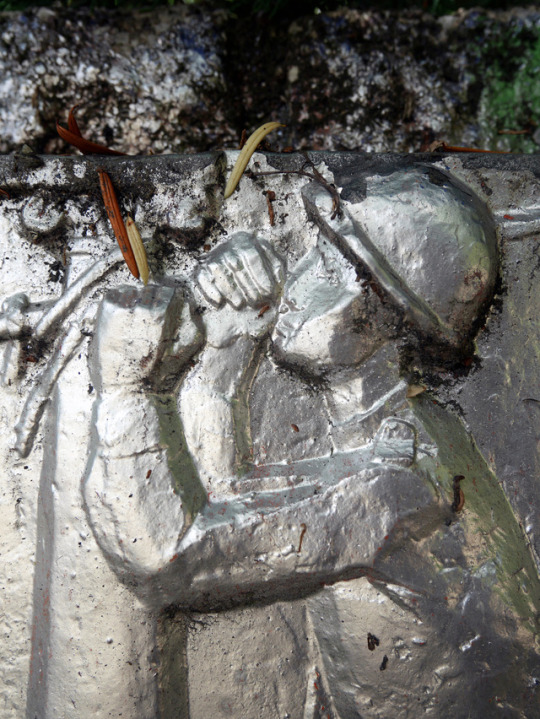
Die Blätter, das Silber. / 03.07.2017
#Berlin#Prenzlauer Berg#Volkspark Prenzlauer Berg#Aus der Geschichte des Bezirks Prenzlauer Berg#Birgit Horota#1971#Kunst der DDR#Relief#Detail#2017#2017Juli#2017Juli03
1 note
·
View note
Photo
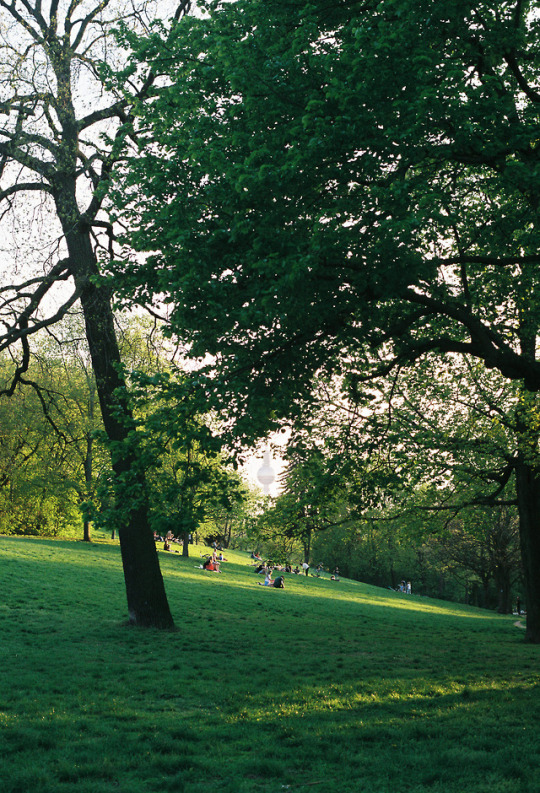
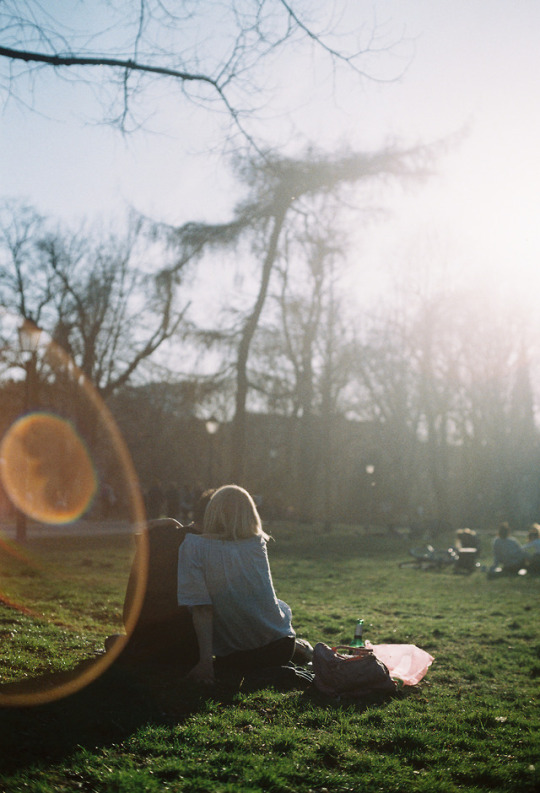
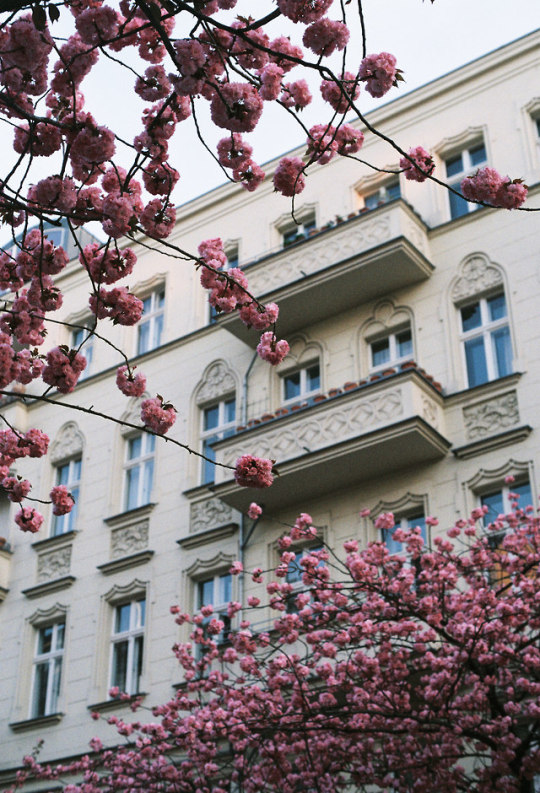
Berlin - April, 2018
Afga Vista 400 x Olympus OM-1
prints | instagram
#berlin#volkspark friedrichshain#Prenzlauer Berg#germany#deutschland#olympus om-1#AGFA Vista 400#Film#Film Photographer#35mm#35mm Film#Analog#Analogue#Analog Photography#Analogue Photography#Artists on Tumblr#Photographers on Tumblr#Photography#I Still Shoot Film#Film is Not Dead
2 notes
·
View notes
Text
NIEMCY: Tysiące ludzi maszerują przez Berlin pomimo zakazu demonstracji – policja w operacji na dużą skalę

28.08.2021r /Dodano 29.08.2021r
Zakaz zgromadzeń przez władze nie powstrzymuje przeciwników polityki koronawirusa przed protestami w stolicy. Tysiące policjantów jest na służbie. Doszło do kilku wstępnych aresztowań i ataków na służby ratunkowe. Nie tylko "myśliciele lateralni" są w drodze.
Ze względu na zakaz niektórych wydarzeń kilka tysięcy demonstrantów zebrało się w sobotę w Berlinie w proteście przeciwko polityce koronawirusa, według policji. Według policji doszło do 36 tymczasowych aresztowań. W przypadku ponad 50 osób ustalono dane osobowe i wydano referencje miejsc. Policja towarzyszyła poszczególnym pociągom i, zgodnie z własnymi oświadczeniami, wielokrotnie przyciągała prowodyrów z grup. Doszło do ataków na służby ratunkowe, najpierw ranny został policjant.
Ponieważ dzielnica rządowa Berlina i Straße des 17. Juni zostały hermetycznie zamknięte przez policję jako pierwotnie planowane miejsce spotkań, demonstranci przenieśli się w dużej mierze bez przeszkolenia przez dzielnice Prenzlauer Berg, Friedrichshain i Mitte, między innymi.
Duża część przebiegała według obserwacji reporterów niemieckiej agencji prasowej na początku raczej bez celu po ulicach. Zdecydowana większość ludzi podróżowała bez masek i innych środków ochronnych.

Na moście Lessing w Moabit demonstranci próbowali również przebić się przez barierę policyjną, według służb ratunkowych. Doszło do gwałtownych starć z policją, gdy tłum próbował przebić się w kierunku Kolumny Zwycięstwa i Wielkiej Gwiazdy. Policja użyła gazu pieprzowego.
Według policji punktem startowym nieautoryzowanej windy był Volkspark Friedrichshain. Kilka tysięcy ludzi zebrało się tam rano, a potem uciekło. Szacuje się, że 500 "myślicieli lateralnych" przeniosło się również przez Tauentzienstraße i Kurfürstendam w zachodnim Berlinie. Przed berlińskim Charité setki ludzi skandowały "Drosten raus!". Na Leipziger Platz odbyła się nowa partia "Die Basis", która wywodzi się ze sceny "myślenia lateralnego". Dziennikarze ponownie informowali w sieciach społecznościowych o przeszkodach i tłumach demonstrantów
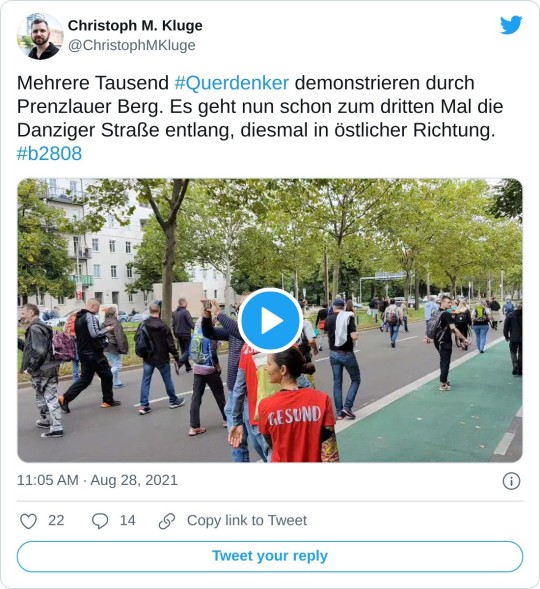
2000 policjantów na służbie
Do obserwacji zagmatwanej scenerii użyto policyjnych helikopterów. Pomimo licznych zakazów demonstracji, policja przygotowała się do większych operacji. Według ich własnych oświadczeń dostępnych było około 2000 sił, w tym wsparcie z Badenii-Wirtembergii, Dolnej Saksonii, Bawarii i Saksonii.
Dziewięć demonstracji zostało wcześniej zakazanych przez policję, w tym wiece "Inicjatywy Querdenken" na ulicy 17 czerwca. Cztery pilne wnioski przeciwko zakazom zostały złożone w Sądzie Administracyjnym w piątek po południu. Sędziowie odrzucili trzy wnioski, z których jeden przychylił się wieczorem: W przypadku spotkania zarejestrowanego na sobotę i niedzielę z 500 spodziewanymi uczestnikami każdy, nie było można było rozpoznać bezpośredniego zagrożenia dla bezpieczeństwa publicznego, ponieważ nie uzyskano jeszcze żadnych złych doświadczeń z wnioskodawcą.
W pozostałych trzech przypadkach ważne jest, aby uczestnicy spotkania prawdopodobnie zignorowali minimalne odległości, które należy obserwować na zewnątrz, aby uniknąć infekcji. Decydujące dla tego założenia są negatywne doświadczenia na licznych spotkaniach sceny "lateralnego myśliciela" w przeszłości. Od decyzji przysługuje odwołanie do Wyższego Sądu Administracyjnego Berlina-Brandenburgii.
Jeszcze przed demonstracjami policja zakładała, że duża liczba osób nie będzie przestrzegać zakazu demonstracji. Dlatego będzie się "egzekwować zakaz zgromadzeń, być odpowiednio obecnym, a w szczególności chronić okręg rządowy", m��wiono przed demonstracjami. Uczestnicy tych wieców i demonstracji "regularnie przestrzegaliby przepisów prawa (...) w celu ochrony przed infekcjami" – uzasadniła w czwartek swoje działania policja.
Szczególnie uważne są również organy bezpieczeństwa, ponieważ rok temu, 29 sierpnia 2020 r., dziesiątki tysięcy ludzi protestowało w Berlinie przeciwko ograniczeniom koronawirusa. Wieczorem demonstranci przebili się przez barierę w budynku Reichstagu, nękali liczebnie znacznie gorszych strażników i przez pewien czas zajmowali klatkę schodową przed wejściem. Jego obrazy wywołały powszechne oburzenie i wywołały międzynarodową sensację.
Od tego czasu napływ takich demonstracji gwałtownie spadł. Obecnie jednak masowe protesty nadal były wzywane w ten weekend za pośrednictwem Internetu i komunikatorów pomimo zakazów. W kanałach Telegrama z tysiącami subskrybentów zwolennicy rozpowszechniali informacje o tym, jak się tam dostać i jak zachowywać się podczas kontroli policyjnych. Ponadto miały zostać przeczytane wskazówki, jak najlepiej poruszać się w Berlinie, jakich aplikacji używają demonstranci, aby się spotkać, a maski ochronne na koronawirusa mogą być również noszone do kamuflażu przez krótki czas.
Ostatnio, 1 sierpnia, pomimo zakazów, kilka tysięcy demonstrantów przemaszerowało przez stolicę i częściowo walczyło z policją.
"Chcemy być demo, a nie Paradą Miłości"
W berlińskiej dzielnicy Prenzlauer Berg protestujący wielokrotnie próbowali dołączyć do innego zarejestrowanego spotkania, "Pociągu Miłości". Policja zapobiegła temu za pomocą barier. "Train of Love" prowadzi z dźwiękami house i techno w sobotę przez Berlin. Policja mówiła w sobotę o około 4000 uczestników. Organizatorzy spodziewali się około 10 000 osób.

Na transparentach widniał napis np. "Walcz z seksizmem", "Bas zamiast nienawiści" czy "Zatapianie myślenia lateralnego". Motto brzmi "My dla Ciebie" i, według organizatorów, powinno oznaczać "przywrócenie wszystkim mieszkańcom tego miasta poczucia ożywienia po czasie pandemii i pokazanie, jak różnorodna jest kultura Berlina". Scena klubowa jest obecnie nadal spowalniana przez pandemię i wynikające z niej ograniczenia.
Planowana trasa rozpoczyna się w pobliżu Mauerpark, prowadzi przez Danziger Straße w kierunku Landsberger Allee i kończy na Karl-Marx-Allee. "Pociąg miłości" zapisał się na sztandarze ustanawiania "znaku większej miłości i zaangażowania społecznego". "Chcemy być demo, a nie Paradą Miłości" - powiedział rzecznik Jens Schwan.
Organizatorzy wielokrotnie wzywali uczestników do przestrzegania niezbędnych środków koronowych. Pomiędzy poszczególnymi pływakami dema biesiadnicy nie zachowywali prawie żadnego dystansu, tylko mniejszość nosiła maski, wiele z nich pod nosem lub na brodzie.
welt.de
Szanowni Państwo, zjednoczeni, możemy więcej.. Prosimy podpisać petycję - Krzyk dzieci https://www.petycjeonline.com/szanowni_pastwo_-_zjednoczeni_moemy_wicej_potrzebujemy_drobnego_wsparcia
1 note
·
View note
Text
a new map of berlin, 1
Fehrbelliner Strasse intersects the indefinite, porous border between the old East Berlin neighbourhoods of Mitte and Prenzlauer Berg. Forming a T with the sloping green space of Volkspark am Weinbergweg, the street is lined with pretty late 19th-century altbauten that had survived artillery and aerial bombardment at the end of World War II, and featureless mid-20th-century apartment blocks. I use the street sometimes as a short cut to a favourite café on Prenzlauer Berg’s wide main street, Schönhauser Allee. A block or so west of the park, there are two bike shops, on opposite sides of the street; outside both, disorderly ranks of shiny, new Dutch, Belgian and English road and utility bikes are arrayed along the sidewalks.
It was within one of these ranks that, not so long ago, on a hot, mid-summer afternoon, I came across a Dutch-built Gazelle 3-speed transportfiets. I wasn’t looking for a bike but it caught my eye. All-black, with 28-inch wheels and steel cargo racks installed front and back, it was big, utilitarian-looking and sturdy. A sales-person urged me to try it out. Nervous, unsteady on the saddle, I pedalled it along the sidewalk to the end of the block. It was all I could do not to topple over. I bought it on the spot.
The bike became my point of access to a city that, to my embarrassment, I had explored hardly at all in the three and a half years I’d lived here.
I was fifty-nine years old when I first arrived in Berlin. Overweight, with chronic reactive arthritis and a bad heart, I relied on a battered black aluminium cane with a wide rubber ferrule to stay on my feet. It made me look even older and more disabled than I was. There was no question then of me taking up cycling: I couldn’t even lift my leg over the modest obstruction of the top tube of my wife’s ‘step through’ Dutch bike, let alone lift myself onto the saddle. I was well above the recommended weight limit for the frame.
Four months ago, I was diagnosed with diabetes mellitus. It was serious enough for the doctor to warn me that I was not only at increased risk of heart failure and stroke but my kidneys and pancreas might already be packing up. As well as medication, I had to undertake an immediate, radical change of lifestyle and diet.
I gave up sugar, starch (including rice, corn and potatoes), dairy products, all processed foods, red meat, fruit juices, alcohol, and caffeine. I increased my intake of unprocessed grains, legumes, fresh fruit and vegetables. I drank nothing but water – lots of water – and forced myself to walk three kilometres every day. Within three weeks, I’d lost ten kilos. Within another month, I had lost ten kilos more and dropped two sizes of jeans. My head was clearer than it had been in a decade and I no longer used a cane.
Now I cycle.
I was tentative at first, tracing random routes through the streets north of Torstrasse, at the perimeter of what was once the ‘death zone’ on the eastern side of the city’s dividing wall, now parkland and newly developed apartment blocks, as I mastered the basics of cycling after an hiatus of more than a decade. But it wasn’t long before I extended my range to several kilometres in all directions, joining informal pelotons of morning commuters south down Rosenthaler Strasse to Hackescher Markt, or escaping traffic on a long, tree-shaded bike lane north on Gartenstrasse, past the Wall memorial park and the walled green space and cemetery of Park am Nordbahnhof, to the Turkish neighbourhoods in Wedding; sometimes, I ventured westwards across the Spree, to the forested pathways and small lakes of Tiergarten, or criss-crossed river bridges as I pushed southwards to Kreuzberg and Neukölln. I made it a point to ride slowly, to be curious, pulling off the road occasionally into the open courtyard of an altbau, an ‘art squat’ or a university campus. I ignored ‘no go’ warnings to pedal through cemeteries, private parks and abandoned industrial states or tow-paths atop narrow, red-brick-banked canals. I delved into cobbled laneways that ended up in dead ends.
Mostly I cycle alone, sometimes with family or friends. But each journey is part of a conscious process in which, maybe for the first time in my life, I am trying to lay claim to a city, to become more than a temporary interloper, a traveller passing through – to make some piece of it my own. And with this column, I’ve started to record the journey, in words and photographs, so I don’t forget.
First published in The Learned Pig, UK, 2016.
1 note
·
View note
Text
Kunstgeschichte im Park (2020-2021)
Lockdown Notizen zu Skulpturen im öffentlichen Raum:
Viktoriapark
Schillerpark
Märkisches Museum
Tiergarten
Treptower Park
Falkplatz
Bornholmer Brücke
Volkspark Prenzlauer Berg
Rehberge
Humboldthain
Arnimplatz
0 notes
Video
Carduus acanthoides by Pascal Volk
#Europe#Germany#Berlin#Berlin Pankow#Prenzlauer Berg#PrenzlBerg#Oderbruchkippe#Volkspark Prenzlauer Berg#Natur#nature#naturaleza#Pflanze#plant#planta#Blume#Flower#flor#Blüte#blossom#bloom#floral#Flower Power#Weg-Distel#Carduus acanthoides#spiny plumeless thistle#welted thistle#plumeless thistle#Sommer#Summer#Verano
2 notes
·
View notes
Photo

Endlich mal Sonne satt in Berlin. 😊 Wir haben sie unter anderem im schönen Volkspark Prenzlberg genossen. Pauli und Akel haben sich jedenfalls prächtig amüsiert und spontan Flip Flops und Badehose rausgeholt. Ich hoffe Ihr habt den Tag auch geniessen können und wart nicht im Büro festgenagelt. Vitamin D3 ist doch gerade im Winter soo wichtig! Das weiß der Chef gewiss auch und stellt Euch eine Entschuldigung aus! 😏 . . . . #gassiservice #berlin #hundebetreuung #gassigehen #prenzlberg #endlichsonne #wintersonne #dogsofig #hundstagram #berlinstagram #tiereinbalance #berlinerhunde #dogsofberlin #petstagram #hobbyfotografie #hunde #sunshinelollypop 🐾🐾🐾 (hier: Volkspark Prenzlauer Berg)
#gassigehen#berlin#hunde#hundebetreuung#hundstagram#wintersonne#berlinerhunde#hobbyfotografie#dogsofberlin#gassiservice#sunshinelollypop#endlichsonne#berlinstagram#petstagram#tiereinbalance#prenzlberg#dogsofig
2 notes
·
View notes
Photo

Over the roof tops of Berlin. Georgenkirche. Prenzlauer Berg, back there. (at Volkspark Friedrichshain) https://www.instagram.com/p/B3UMfyDHQcX/?igshid=co4t3g4okwhj
0 notes
Photo

I just wanted to give up this morning but I pushed through. Oh My Goodness why is Re-starting so freaking hard😫😑? ---- Anyway Day 2 of running🏃🏽♀️after surgery and my body feels great NOW but during that run it was hell but at least I had a view of the pond and duckies 🦆 ---- Again my Love encouraged me this morning and I got out there!! ---- It's always easier to do things when you have a support group or someone who believes in you and he does😍. So I thank you My Love for pushing me to be my best 😚 ---- Today when things get hard Don't Quit just Rest and get back at it again. ---- ---- ---- ---- ---- ---- ---- #selfie #selfies #self #writer #runner #author #screenwriter #msrunner #mswarrior #pond #ducks #parkrun #trailrunning #trail #dontgiveup #keeprunning #keepgoing #iloveyou #inspiration #motivation #pushyourself #selflove #loveyourself #imissyou #thankyou #sweat #berlinrunners #runnersofinstagram #running #run (at Volkspark Prenzlauer Berg)
#run#selfies#trail#keeprunning#sweat#keepgoing#parkrun#self#runner#screenwriter#pushyourself#writer#dontgiveup#selfie#trailrunning#inspiration#pond#mswarrior#berlinrunners#ducks#iloveyou#runnersofinstagram#msrunner#selflove#imissyou#thankyou#motivation#running#loveyourself#author
1 note
·
View note
Note
Hi, I'm travelling to Berlin soon for 4 days and was wondering if you had any ideas for interesting locations to visit and explore. I've seen the main tourist attractions and am looking for lesser known locations. Thanks!
Dear Anon, I see your problem but I don´t know exactly what you saw in Berlin, so I´ll give you a list of some fancy places and tours I would do myself:
BIKE TOURS: In sunny days you could rent a bike to go around the city. I had a good experience with “Lila Bike” in the Schönhauser Allee and a very bad one with a Bike stand near the Brandenburger Tor. In the center, you pay 12 Euros per Day and by Lila 8-10 so I definitely recommend it. Nice bike tours are to Wannsee, the big lake in South West Berlin (you can just take a look at the recommended stages and trust google maps if you don´t want to book a tour.) or the tour to Potsdam.
CHILLING IN THE PARK: Berlin has beautiful parks. The biggest is the Tiergarten and you might have already been there. Very nice but quite touristic is the Teahouse at English Garden, so I rather go to the Cafe am Neuen See (I don´t know if you can German but you can see the nice pics). You can bring a blanket and some food and picnic. In the Wes it can be a bit crowded so better during the week. If you haven´t done it already, you can visit the Zoo, where you can feed the Gorillas and Monkeys or see hippos or penguins shows ( here you can see the times). Other nice parks are the Volkspark in Friedrichshain, where you visit the Märchenbrunnen, a big fountain representing Brothers Grimm´s Fairy Tales, and Görlitzer Park in Kreuzberg. Görli is also the right place if you fancy playing ball or smoke weed.
BEACHES: If you go to Warschauer St. along the river, you find some little beaches and Coffee Shops where you can sunbathe. Just start from the Oberbaumbrücke and follow the river or take a look at the beautiful Graffiti of the East Side Gallery, the biggest intact rests of the Berlin Wall.
CULTURE: Have you already been to the Jüdisches Museum / Jewish Museum? It´s a sublime experience and gift of the architect Daniel Liebeskind (the one who build Ground Zero in NY). It´s not just a Jewish collection telling the story of the holocaust, and if you haven´t seen it yet you´re missing something huge. A nice place to get to know a piece of berlin history is the Brechthaus / Brecht House. Here you get a guided tour and you can also take a little excursion to the Cemetery in the Dorotheestraße. and visit Brecht and his wife Helene Weigel, and the philosophers Hegel, Fichte and Herbert Marcuse.If you like contemporary art you might like the Hamburger Bahnhof and see some Warhol, Roy Lichtenstein, Joseph Beuys… I suppose you already saw the museums in the Museums Island but if not you can´t miss the Nefertiti´s Head and the beautiful Egyptian collection at Neues Museum and the monumental Ishtar Door and Pergamon Altar at Pergamon Museum.
FANCY PLACES AND TOURS: At Berliner Unterwelten e.V. you can visit the underground Berlin, the old II WW bunkers and subway stations, including Hitler´s bunker. Or if you want to take a look at some old soviet architecture from the DDR time (German Democratic Republic) walk along the Karl Marx Allee and have a cozy coffee (or brunch) pause at Cafe Sybille. Here you´ll find a little photo exhibition on the story of East Berlin monumental Street.
FOR A SUNDAY BRUNCH: Cafe Morgenrot (Prenzlauer Berg), Cafe Morgenland (Kreuzberg), Que Pasa (Kreuzberg).
FOR A DANCING EVENING: Clärchen Ballhaus (Mitte), Cassiopeia (Kreuzberg).
FOR A FANCY COFFEE + BOOK EXPERIENCE: Shakespeare&sons - ENG Bookshop (Friedrichshain), Literaturhaus in der Fasanenst. - GERMAN Bookshop (but lovely Garden!) (Charlottenburg/ Wilmensdorf), St George´s Bookshop - ENG -( Prenzlauer Berg). These are my inside tips for now. I´m not a Berlinerin but I´m still working on it. Hope it helped :)
#Berlin#tourist in your city#berlin tour#bike tour#my places in berlin#anon#anon ask#berlin holidays#my addresses in berlin
21 notes
·
View notes
Text
36 Hours in Berlin – The New York Times
On Nov. 9, 1989, the East German government made a surprising announcement: It was easing up travel restrictions on its citizens. East Berliners flocked to the nearest border crossings at the Berlin Wall, especially at Checkpoint Charlie, the famed crossing between the divided Berlins. Not long after that, Berliners from the east and west began chipping away at the literal and metaphorical wall that had separated them for nearly three decades, since the Soviet-backed East German government erected the concrete slabs that split the city in two. The Cold War was over. Well, sort of. Today in Berlin you can still go back to that world by eating and drinking in restaurants and bars dedicated to the German Democratic Republic — G.D.R. for short, or D.D.R. in the local parlance — as well as learn about the former East Berlin via fascinating museums, architecture and shops.
Friday
1) 3 p.m. Communists, nudists and dissidents
Ever wonder why East Germans had a proclivity for hanging out in public stark naked? Or what it was like to drive a Trabant — the cult East German-made automobile with a Formica-like Duroplast body — around East Germany in the 1980s? Or what an interrogation room looked like? You can find out at the DDR Museum, a fascinating, immersive, hands-on experience that serves as an excellent introduction to life in East Germany. The museum, which opened in 2006 and is housed in a modern building on the Spree River, recently welcomed its six millionth visitor. Admission: 9.80 euros, or about $10.80.
2) 7 p.m. The ‘People’s’ restaurant
Named for the “People’s Chamber,” the lower house of parliament in the G.D.R., Volkskammer tries to revive East Germany on a daily basis by cooking up gruel for the odd local with a case of “ostalgie” — nostalgia for the old East — and curious tourists willing to punish their palates with hearty slop like Falscher Hase, or counterfeit rabbit: a dense, gravy-smothered meatloaf hiding a hard-boiled egg and cured pork knuckle with kraut. Dinner for two is about €50, including beer or wine. If you can’t stomach Soviet-era cuisine, try nearby Michelberger (in the hotel of the same name), which serves up excellent farm-to-table, uber-seasonal fare such as venison pie or wild boar schnitzel with pumpkin. Dinner for two is about €75, with wine.
3) 9 p.m. Red hangover
Opened in 1992, just three years after the Wall fell, Die Tagung, a bar in the Friedrichshain neighborhood, celebrates the G.D.R. with a sense of humor. The owner, a longtime Friedrichshain resident, scoured a local abandoned train repair complex for former East Berlin-era signs that now grace the walls, along with tapestries bearing the image of Karl Marx, and a large bust of Vladimir Lenin who was, on a recent visit, sporting headphones and aviator glasses. There are also enough red stars and hammer-and-sickle symbols to inspire a collective May Day parade. Imbibe a Russian Cocaine, €3: a shot of vodka that comes with a slice of lemon coated with sugar on one side and coffee grinds on the other.
Saturday
4) 10:30 a.m. A Stalinist stroll
Built on the rubble of World War II, the wide boulevard known as Karl Marx Allee started life as Stalinallee, Stalin Boulevard, but was renamed after Marx in 1961. Between Frankfurter Tor in Friedrichshain and Alexanderplatz — just under two miles — the 300-foot-wide street is lined with monumental, wedding cakelike, Stalinist-style structures, built to be “workers’ palaces,” a place for East Germany to showcase the glories of Socialism. The Italian architect Aldo Rossi called it “Europe’s last great street.” Placards are positioned along the way to explain the history of noteworthy buildings, such as Kino International, a still-working movie theater and a gem of functionalist architecture, and the duel towers, Frankfurter Tor.
5) Noon. Snack break
Named for a popular G.D.R.-era magazine, Café Sibylle is one of the few businesses on the Karl Marx Allee that still exists from the Cold War days. About halfway along the boulevard, the cafe is nicely positioned for a rest. After taking in the permanent exhibition on the evolution of the boulevard, complete with text, photos and household objects from the 1950s and 60s, plant yourself at a table and sip coffee or a beer and graze on a salad or a sausage. The wooden tables and high ceilings invite visitors to stay awhile. Lunch for two costs about €25.
6) 3 p.m. Shop like a Socialist
Good news, comrade! Both ends of Karl Marx Allee — or at least between Frankfurter Tor and Alexanderplatz — are book ended by Humana Second Hand & Vintage shops. The outlet at Frankfurter Tor is the largest secondhand shop in Berlin: four floors of vintage and used duds. The top floor focuses on clothes from the 1950s to the 1990s, and there are often select racks for G.D.R. clothes at either or both locations. If you like your Socialist souvenirs even more kitschy, head to Ampelmann, south of Alexanderplatz, a shop that sells images of the “traffic light man,” an East German symbol that has become iconic since the fall of the Wall, on everything from golf balls to coffee mugs to T-shirts.
7) 5:30 p.m. Walking the Wall
The East Side Gallery in Friedrichshain; the long stretch of the Berlin Wall that is clad in colorful iconic images; and the Wall Museum near Checkpoint Charlie: These sites all get ample visitors. But the most sobering way to get a sense of what it was like to live in Berlin during the time of the Wall is at the Berlin Wall Memorial in Prenzlauer Berg. This portion of the wall and the harrowing section known as the “death strip” — with its booby traps, armed guards, towers and trenches — allow visitors to see the most preserved swath of the remaining wall complex. Admission is free.
8) 8 p.m. Vodka shots and soljanka
Opened in 1994 and located in the former East Berlin neighborhood of Prenzlauer Berg, Restaurant Pasternak serves dishes from around the former Soviet Union, particularly from Russia and Ukraine; many of the options have an Eastern European Jewish bent. The restaurant is named after the Nobel Prize-winning Russian poet and author of “Doctor Zhivago,” Boris Pasternak. Start off with a bowl of soljanka, a creamy, dill-spiked soup that has Russian origins, but was one of the most popular dishes in the former East Germany; then move on to sautéed calf’s liver and latkes accented with a spicy apple jam. And don’t forget to have a few shots of the house vodka. Dinner for two, about €85 with wine or vodka.
9) 10 p.m. House party
You could go to the Museumswohnung, a three-bedroom apartment so perfectly preserved you’d almost expect the Stasi, the official East German state security apparatus, to be bugging the place. Or you could spend your Saturday night dancing at Salon zur Wilden Renate, a techno club that took over an abandoned apartment building in Friedrichshain and sort of left things as they were, including 1970s wallpaper, couches and beds. Opening times vary, so check the club website before heading out. Entrance is €10 to €15, depending on the night and event.
Sunday
10) 11 a.m. The lives of others
The Stasi’s main job was spying on ordinary people who were not in line with party policies and values, hauntingly depicted in the 2006 German film “The Lives of Others.” The Stasi Museum is in the agency’s former headquarters in Lichtenberg. The three floors hold hundreds of artifacts, such as bugging devices, hidden cameras and lock picks, as well as placards detailing nearly every aspect of the organization, including the fact that up to 180,000 East German “unofficial informants” were working with the Stasi by 1989. The tour ends on the third floor at a cafe and bar — after the museum, you might need a stiff drink. There are free 90-minute guided tours in English at 3 p.m. on Thursday to Monday. Admission is €8 and the tour is free.
11) 2 p.m. Schnitzel and schlock
PILA is a restaurant on Friedrichshain Volkspark that also bills itself as a museum dedicated to the former East Germany. The interior is bedecked with all manner of G.D.R. minutiae — enough East Berlin flags and portraits of former dear leaders to bring tears to the eyes of those nostalgic for five-year plans and collective farming. This is a place for those craving dishes like schnitzel atop fusilli pasta with a few splotches of ketchup-spiked tomato sauce and plus-size plates of currywurst, which is better than you’d think. Even the light, flimsy forks and spoons are legit G.D.R. throwbacks. Lunch is about €40 with beer.
Lodging
A Stadtbad, or public bathhouse starting in 1902, this ornate building in pretty Prenzlauer Berg became a hotel in 2016. Hotel Stadtbad Oderberger (Oderberger Strasse 57; +49 (30) 780 089 760; www.hotel-oderberger.berlin; doubles from 117 euros per night) has 70 rooms, five suites and two apartments. Rooms have oak floors, TVs and coffee makers. The bathrooms have rain-shower heads. The handsome in-house restaurant, housed in a former thermal power station, cooks up German dishes with modern flair and offers a fair number of vegan and vegetarian options. And don’t forget your swimming suit. The original pool is now the hotel pool.
Ostel (Wriezener Karree 5; +49 (30) 2576 8660; www.ostel.eu; doubles from 42 euros per night) is an East Berlin-themed hotel near the Ostbahnhof, or East Railway Station, in Friedrichshain. The 36 single and double rooms are, as one would expect, dripping in Communist-era kitsch, complete with groovy, colorful wallpaper and bedspreads. All rooms have G.D.R.-era radios. But be careful! It would be easy to think that the Stasi is secretly listening to you. Some rooms have shared bathrooms.
If you want to go the private apartment rental route, base yourself in pretty Prenzlauer Berg where studios and one-bedroom apartments may cost around €75 per night.
Sahred From Source link Travel
from WordPress http://bit.ly/2NsySIU
via IFTTT
0 notes

